Windows 11's Moment 1 update introduces a significant enhancement to the File Explorer: the addition of tabs. This feature allows you to manage multiple folders within a single window, streamlining multitasking and navigation. Along with tabs, the File Explorer also features a new navigation panel and a Home page, enhancing the overall user experience.
The tabbed interface operates similarly to a web browser. Instead of opening separate windows for each folder, you can now open multiple folders in different tabs within a single File Explorer window. This not only declutters your taskbar but also makes it easier to move through different folders without confusion.
Adding New Tabs in File Explorer
With the new tabbed interface, you have several ways to open new tabs in File Explorer. You can use the Title bar, keyboard shortcuts, or the context menu to open new tabs.
Open a New Tab from the Title Bar
To open a new tab from the Title bar, click the Plus (+) button located next to the existing tabs. This action opens a new tab displaying the Home screen of File Explorer, where you can access Quick Access, Favorites, and recent items.
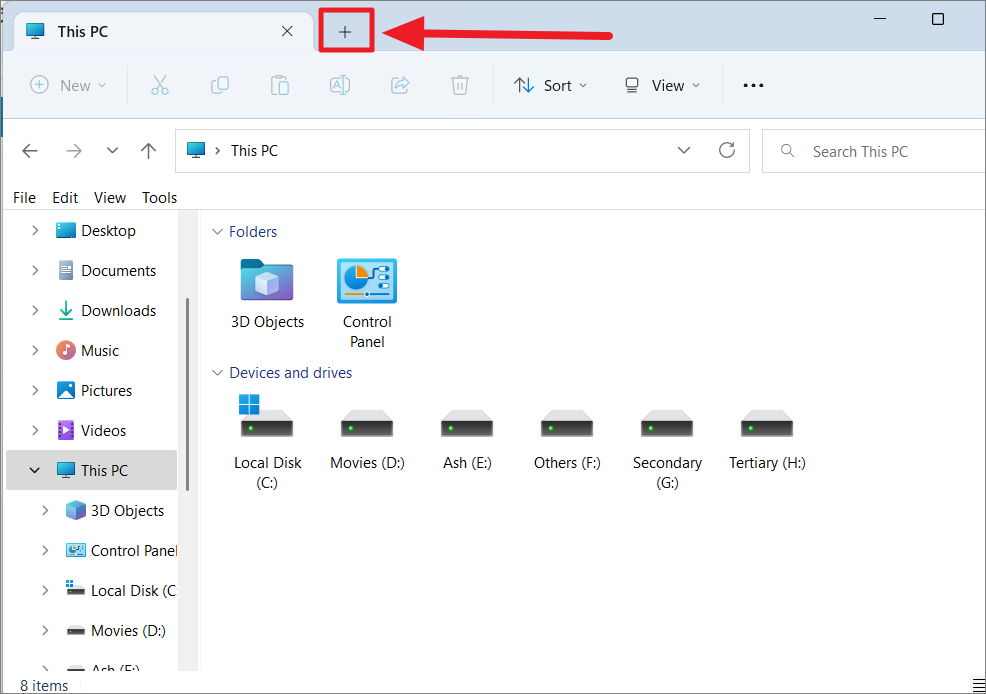
Open a New Tab Using Keyboard Shortcut
You can quickly open a new tab using a keyboard shortcut. Simply press Ctrl + T on your keyboard, and a new tab will open instantly.
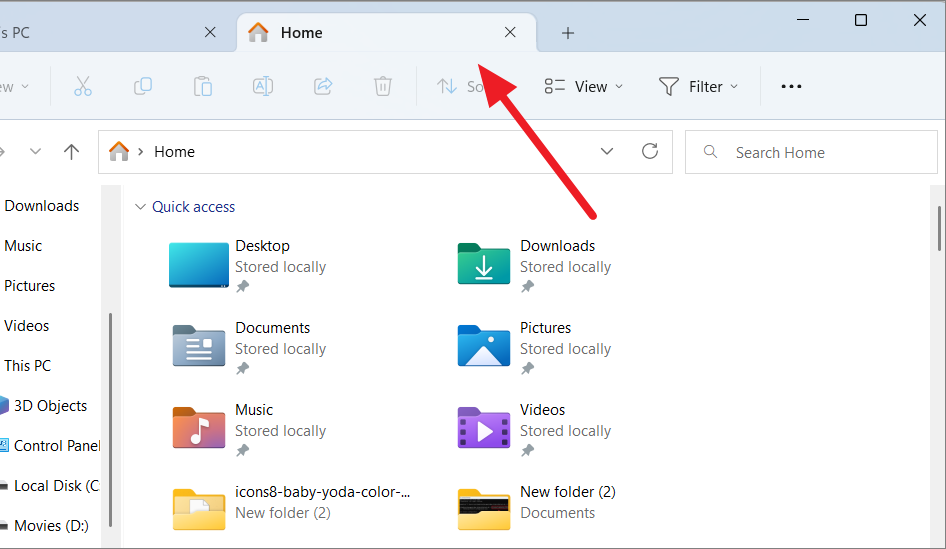
This method allows you to add as many tabs as you need without using your mouse.
Open a Folder in a New Tab Using Context Menu
To open a specific folder or drive in a new tab, right-click on the folder or drive and select Open in new tab from the context menu.
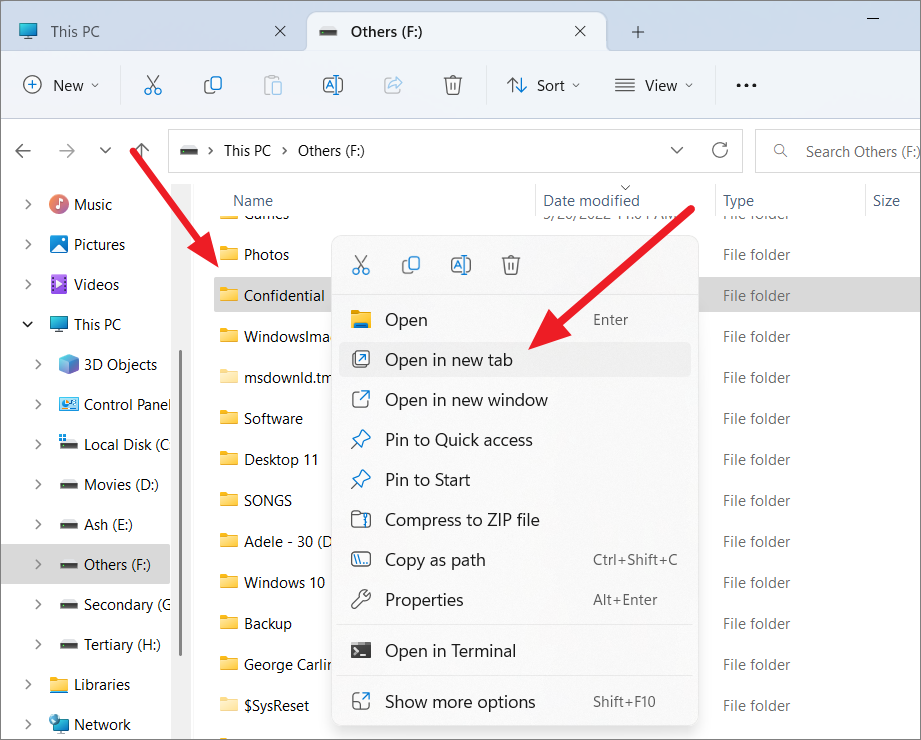
The selected folder will open in a new tab, and each tab will be labeled with the name of the folder or location, making it easy to navigate between them.
Switching Between File Explorer Tabs
When working with multiple tabs, you can switch between them using your mouse or keyboard shortcuts.
Select the Tab from Title Bar
Using your mouse, you can click on any tab in the Title bar to make it active.
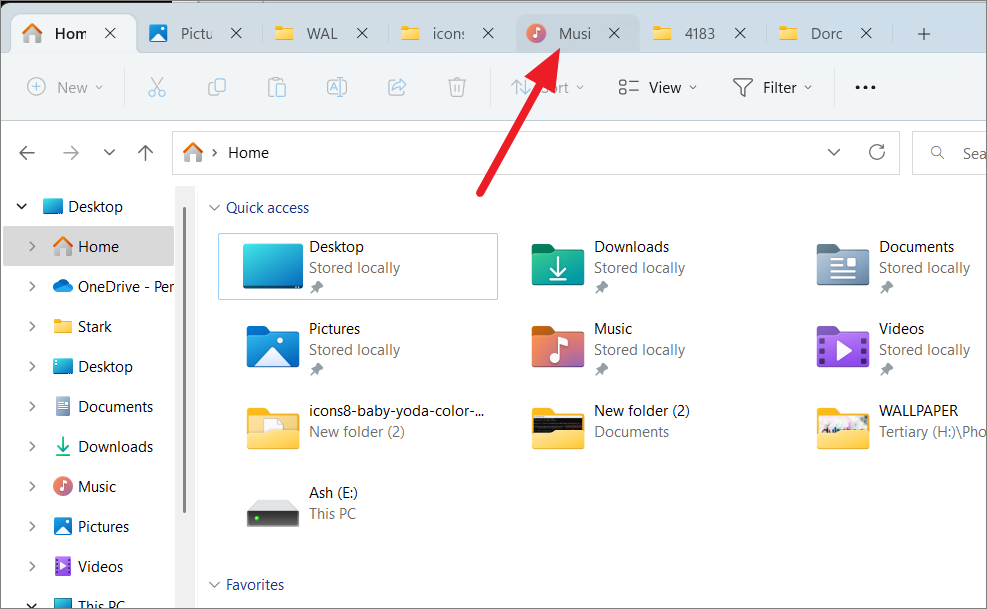
Keyboard Shortcuts to Switch Between Tabs
You can use keyboard shortcuts to navigate between tabs efficiently.
To switch to the next tab (the tab to the right), press Ctrl + Tab. Continue pressing this shortcut to cycle through the tabs.
To switch to the previous tab (the tab to the left), press Ctrl + Shift + Tab. This shortcut allows you to move backward through your open tabs.
If you want to jump directly to a specific tab, use Ctrl + [Number] (numbers 1 to 9). For example, pressing Ctrl + 3 will take you to the third tab from the left.
Closing Tabs in File Explorer
You can close tabs in several ways to manage your workspace effectively.
To close an individual tab, click the X button on the tab you wish to close.
Alternatively, right-click on the tab and select Close tab from the context menu.
To close all tabs except the one you're currently working on, right-click the active tab and select Close other tabs.
If you wish to close all tabs to the right of the current tab, right-click the tab and choose Close tabs to the right.
Closing Tabs Using Keyboard Shortcut
To close the current tab with a keyboard shortcut, press Ctrl + W. After closing a tab, the next tab in line will become active.
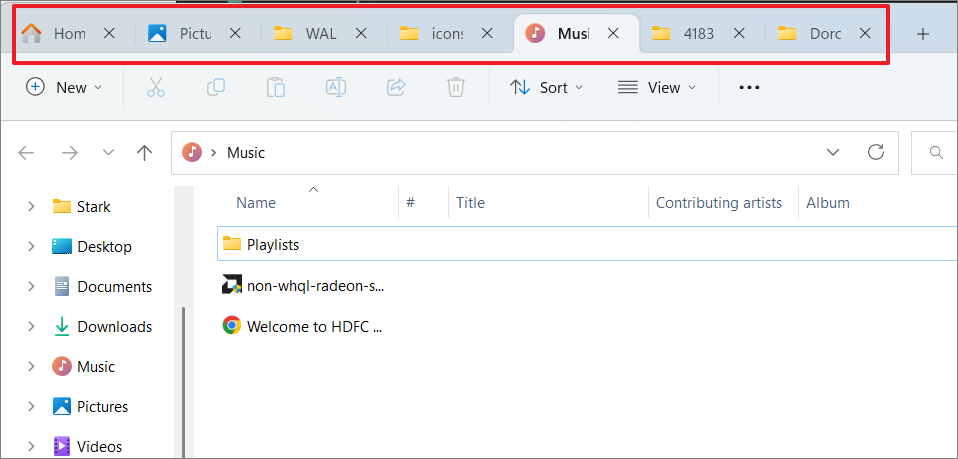
Opening a New Window in File Explorer Instead of Tabs
While tabs are convenient, sometimes you may prefer to open folders in separate windows. Although you can't drag a tab out to create a new window, you can open folders in new windows to organize your workspace better.
For instance, if you're working on different projects, you can open each project's folder in a separate window for easier management.
Opening a Folder in a New Window
To open a folder or drive in a new window, navigate to it, right-click, and select Open in new window from the context menu.
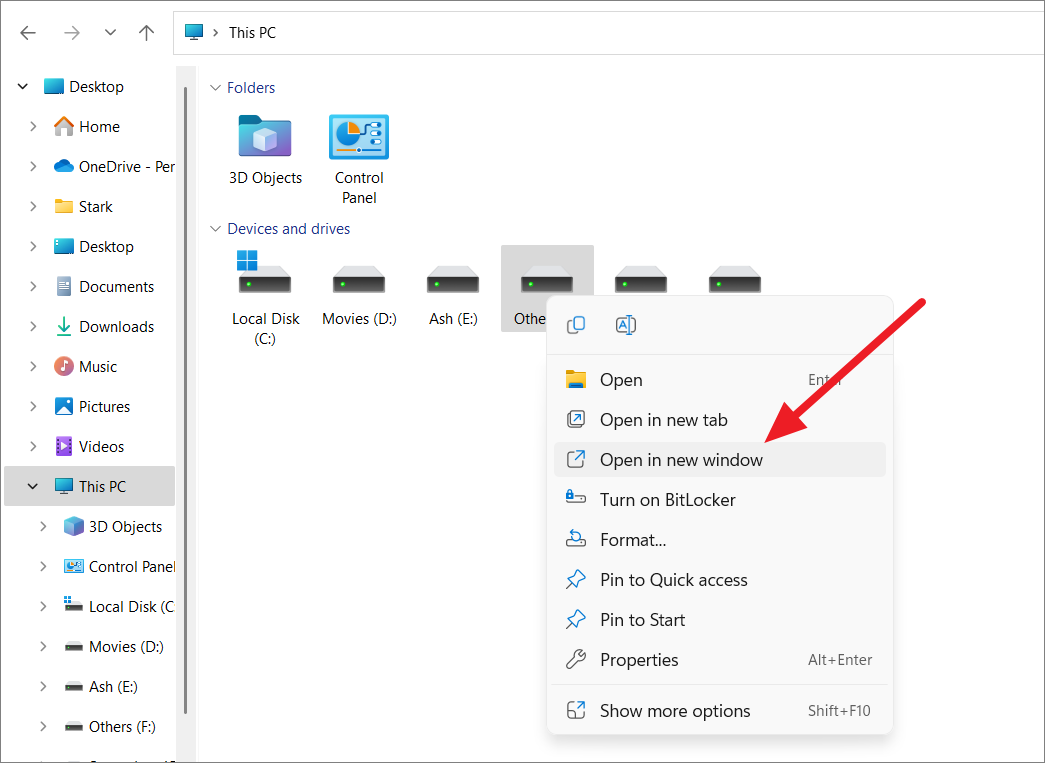
Opening a Folder in a New Window Using Keyboard Shortcut
Alternatively, you can select the folder and press Ctrl + N to open it in a new File Explorer window.
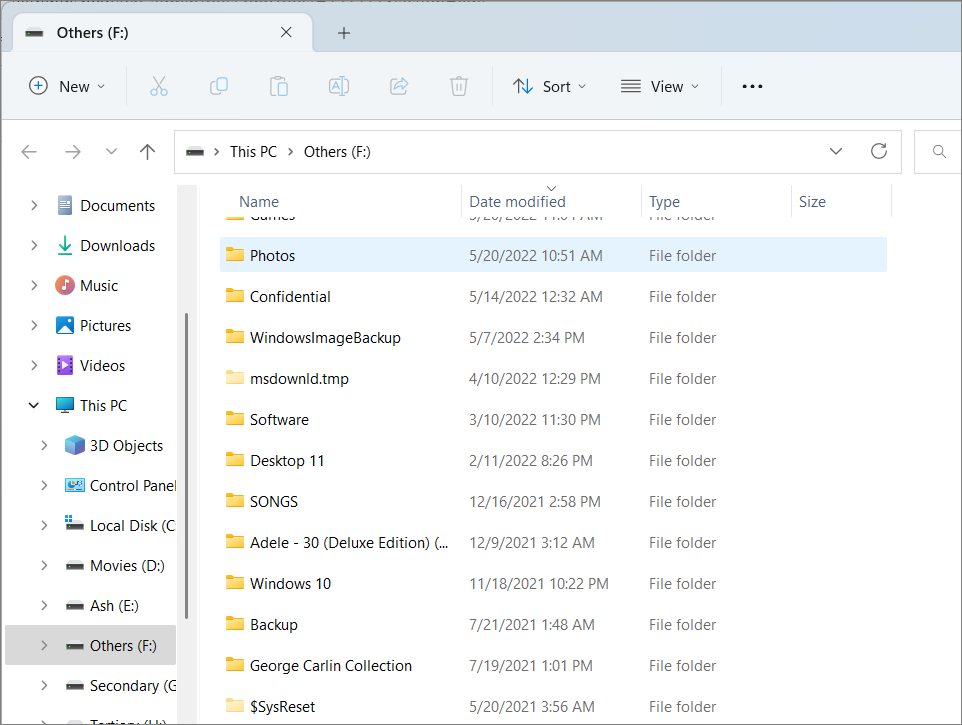
Re-arranging File Explorer Tabs
You can rearrange the order of your tabs to suit your workflow. To move a tab, click and drag it to the desired position on the Title bar.
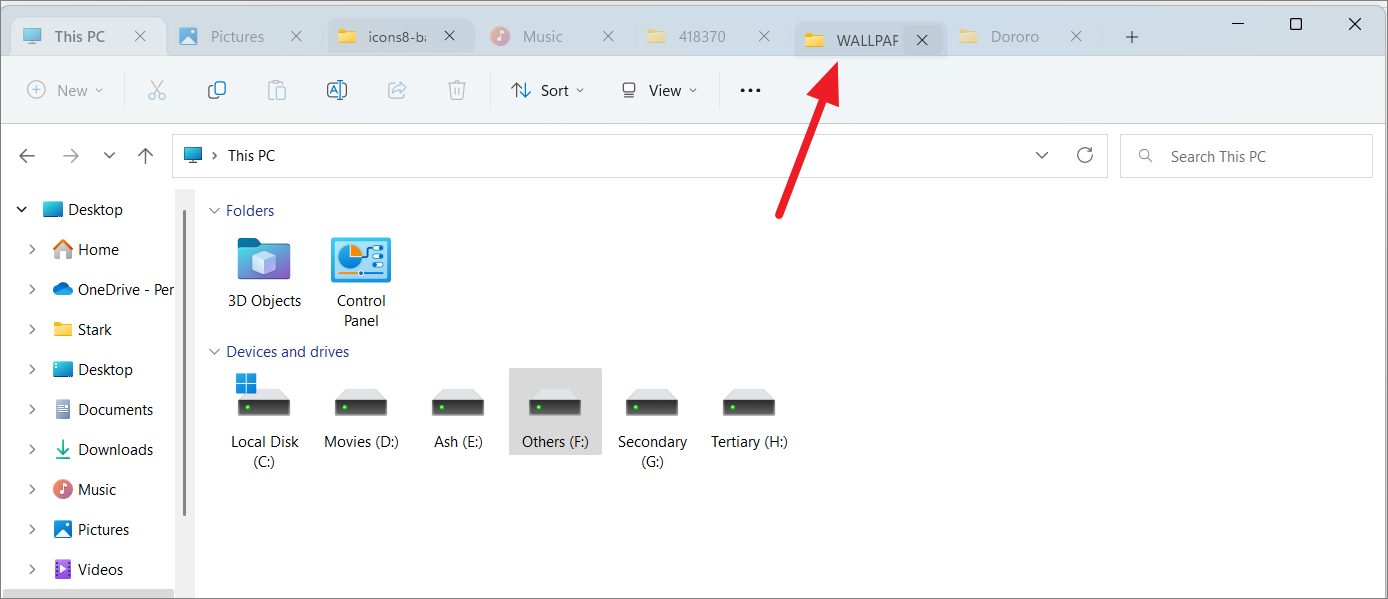
Scroll Tab List Forward and Backward
If you have numerous tabs open, arrow buttons will appear on either side of the tab list. These buttons allow you to scroll through your tabs when they extend beyond the visible area.
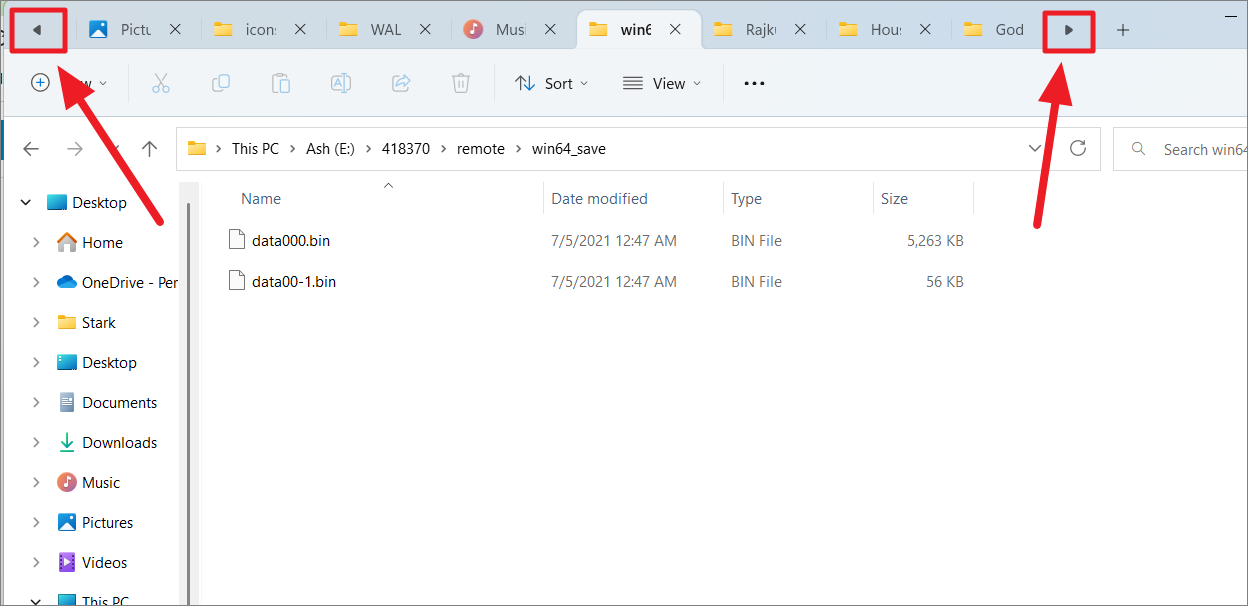
Copy Files Between File Explorer Tabs
Copying files between folders is more straightforward with tabs. You can drag and drop files from one tab to another without opening multiple windows.
To copy a file to another folder, click and hold the file you want to copy, drag it over the destination tab, and wait for the tab to open. Once it does, continue dragging the file into the folder and release it when you see the Copy to [folder name] prompt.

If a "can't move" icon appears while dragging, continue holding the file over the tab until it opens.
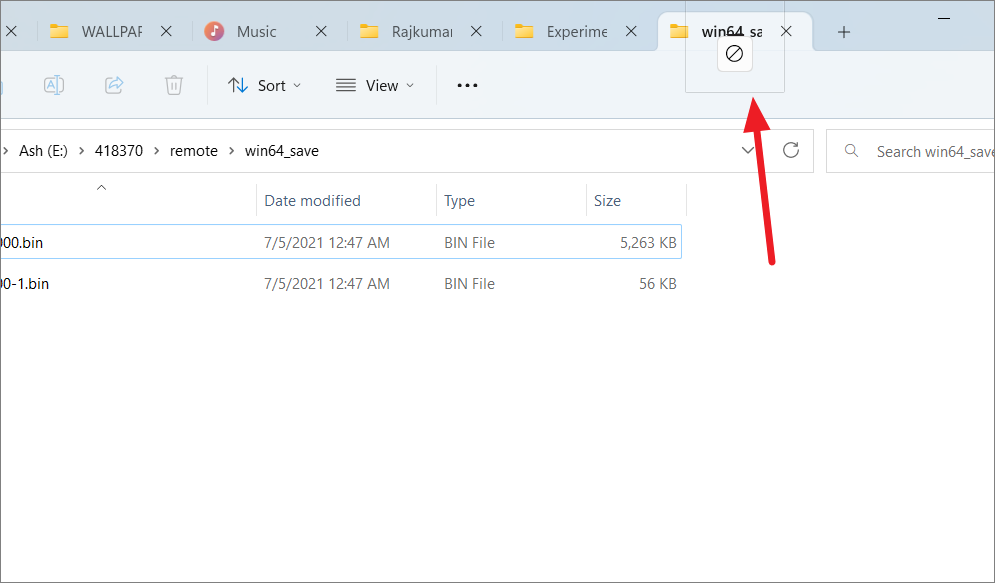
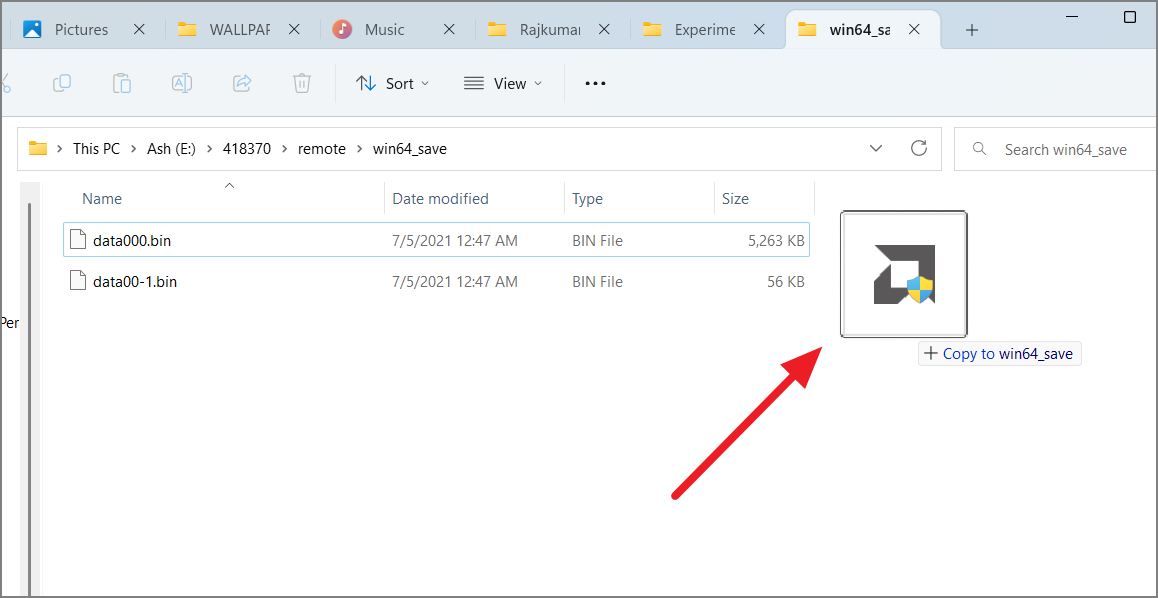
The file will then be copied to the destination folder successfully.


